Vogue’s First Black Cover Girl Is Still Fighting Racism
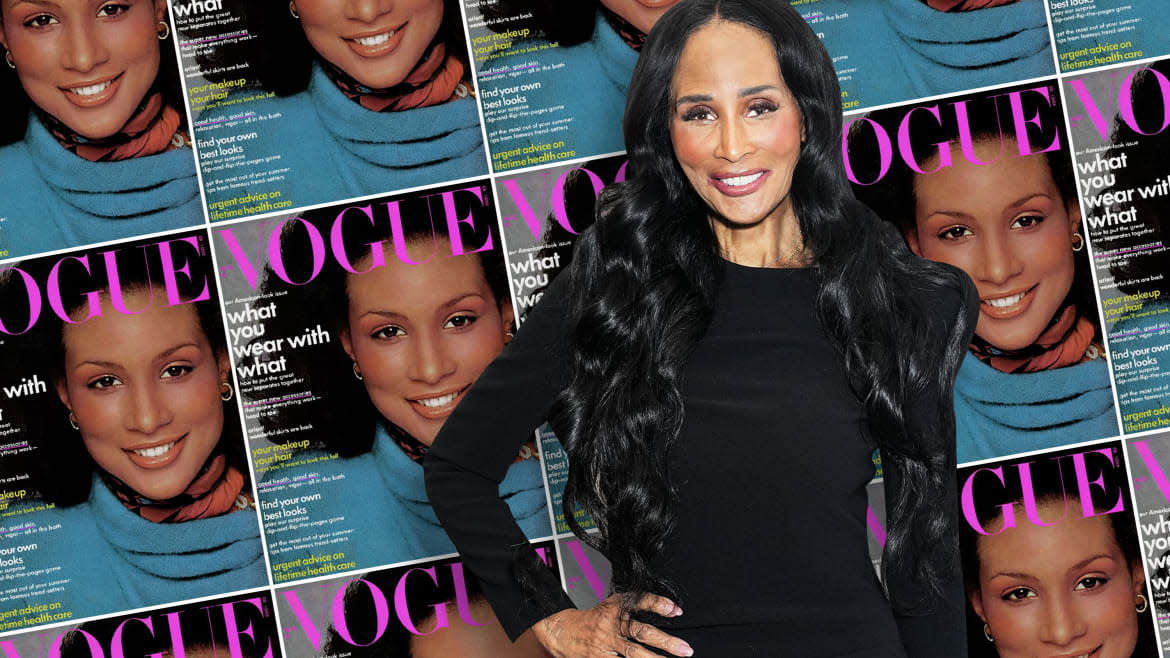
As a Black girl growing up in the 1990s, I saw relatively few models who reflected me as they graced the runway, or when their faces flashed across magazine spreads and covers.
Yet Beverly Johnson was a force I came to know fairly early on, as my family viewed her as a regal icon and a smasher of barriers because she helped prove to the world that Black is beautiful.
This year marks the 50th anniversary of Johnson’s appearance on the cover of American Vogue magazine—the first Black model to cross that threshold.
“I had been chosen for a particular moment in history… at first I was like, ‘Dang, that’s a lot of responsibility,’” Johnson told The Daily Beast. “But since that happened, I made a pledge to myself that I was going to do whatever I could to respect that position that I was put in.”
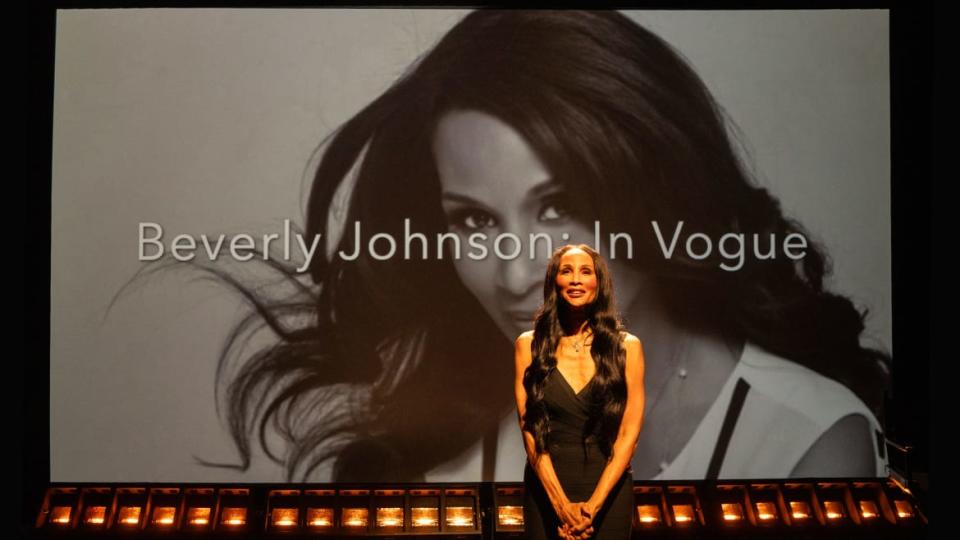
Beverly Johnson onstage during her production of Beverly Johnson: IN VOGUE at 59E59 Theaters.
For Johnson, part of that legacy is speaking out about racism within the industry and working as an advocate for change.
She acknowledged that though the “fashion industry has always gotten their inspiration from Black people,” there’s still plenty of room for improvement on diversity and that more people of color need to be making the heavy decisions.
“We’re the messengers or whatever… They put you on the cover of Vogue, you can walk down the runway, but you’re not participating in the industry—a trillion-dollar industry! We’re not there,” she exclaimed. “They've already proven that diversity increases [their] bottom line… It’s just getting in the room and then looking at [a Black person] as a human being eye-to-eye.”
Beverly Johnson Asks: Where Are All the Black Models?
She also called the fashion and beauty industries the “Wild West” due to limited regulations over the treatment of models, who are at risk of being abused at the hands of touchy photographers and exploited without pay transparency.
“It’s a tricky industry,” she said, explaining how models are now coming together to create an alliance for their protection.
“I am lending my name to that. If I could leave this world with that industry that made me who I am a little bit better, that would be an amazing legacy for me.”
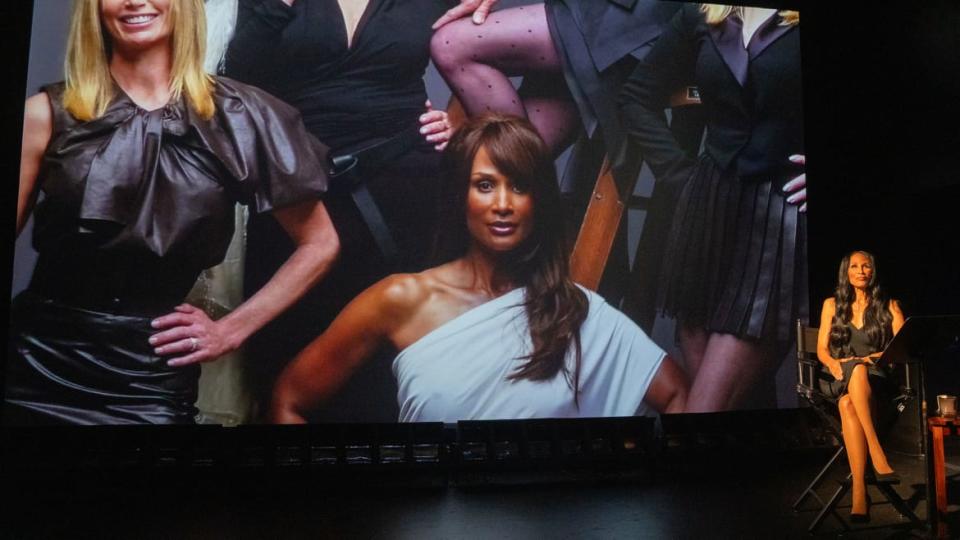
Beverly Johnson is working with other models to create an alliance for their protection. “It’s a tricky industry,” she says.
The work continues for Johnson, who decided to mark the anniversary of her historic Vogue cover with a one-woman show that tackled the inner workings of the modeling industry, including the abuse and sexual assault of young women who just wanted to flourish in their careers.
Johnson explained that she had been working on a one-woman show for a while, but the 2020 pandemic stalled the production. Then in 2023, her team made a call to a New York City theater—just blocks from the newsstand where she first saw her Vogue cover in 1974—to put something together.
“God is so good because this is how I’m celebrating,” Johnson told The Daily Beast, adding that she wanted “to do something special” to mark the anniversary of her iconic cover.
Johnson gave the audience a sleekly minimalist production. A clean stage—save for a chair and music stand—made space for a large screened backdrop to set the tone throughout the evening. On it, a montage of Black women trailblazers lit up the screen, from Rosa Parks to Bessie Coleman and Mae Carol Jemison. The women shared a fierce sisterhood that everyone in the audience seemed to understand without uttering a single word.
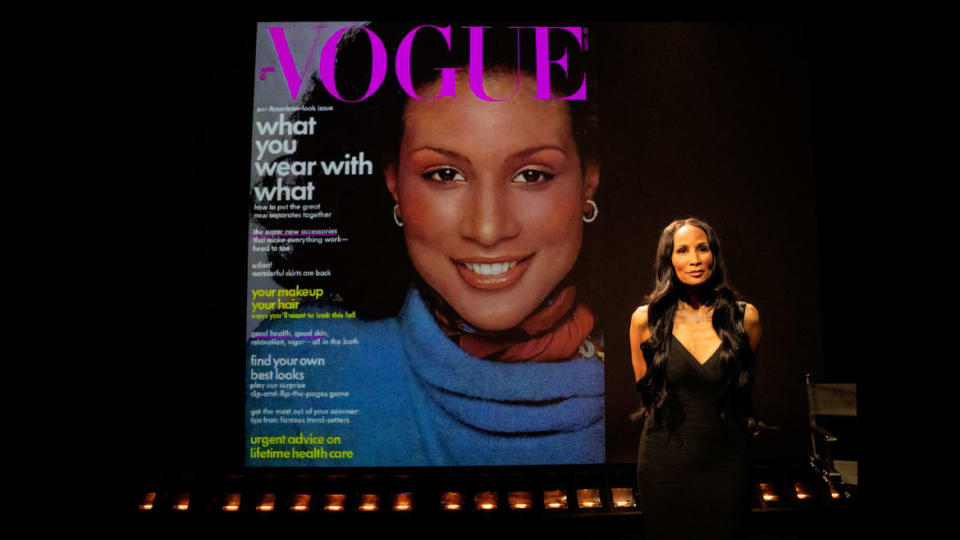
Trailblazer Beverly Johnson was the first Black model to grace the cover of American Vogue.
Then, Johnson walked onstage with an unmatchable amount of confidence. It was hard to believe—right there, on that stage—a legend continued to manifest her legacy and celebrate the five decades since she made major strides for Black people everywhere.
“This cover turned into a little bit of history,” Johnson told the audience as an image of the August 1974 issue of Vogue popped up on the screen. “It was my first Vogue cover and the first time a Black woman appeared on the cover of American Vogue.”
How This Iconic Black Model Changed the Fashion Industry
Stacked in a black dress and pumps, Johnson didn’t need a catwalk to demand attention. For 90 minutes, the staged reading of Beverly Johnson: IN VOGUE at the 59E59 Theaters detailed the model’s life growing up in Buffalo, her upbringing in a family full of academics and her personal aspirations to become a lawyer. Then, she had a stroke of luck trying out the modeling industry to make extra money at the age of 17.
Johnson’s modeling career began when she went to New York City during the summer to look for a temporary job before starting college at Northeastern University in the fall. It was in the middle of the Civil Rights Movement and Johnson had a goal of becoming a lawyer, but people repeatedly told her she should model. After making connections and moving from one person within the fashion industry to another, Johnson landed a gig with Glamour magazine. From there, the work just flowed.
“I didn’t even know what a model was. What attracted me was that they made $75 an hour,” Johnson said in an interview with The Daily Beast. “My family, putting so many of us through school, were struggling. [Modeling] was an opportunity.”
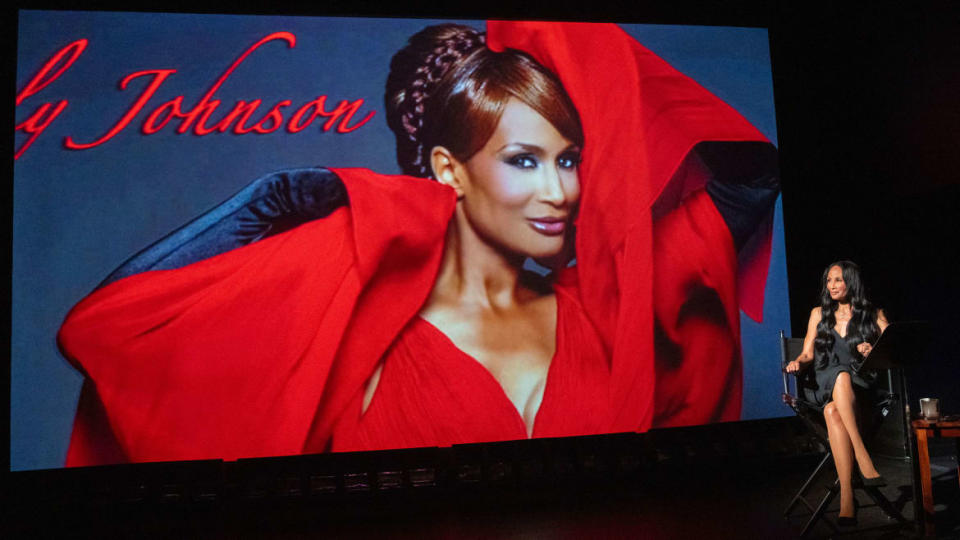
To celebrate the 50th anniversary of her iconic Vogue cover, Beverly Johnson launched a sleek and minimalist theater production.
Johnson remembered a moment when her mother had to count pennies from her change purse before sending Johnson to the store for milk.
“I said to her, ‘One day, Mom, I’m going to make a lot of money. You won’t have to do that anymore,’” she said. “I always wanted to help my parents. This was an opportunity to do that. For me, it was just like any other assignment.”
However, it was the 1970s and overt racism was very much alive, especially in an industry that judged people on their looks. Despite being consistently booked for gigs because she required very little retouching, which was quite expensive at the time, Johnson recalled instances of unconscious bias and discrimination. Particularly, she remembered a time when an art director drew her as a black spot on a fashion show diagram while the white models were all properly labeled and drawn.
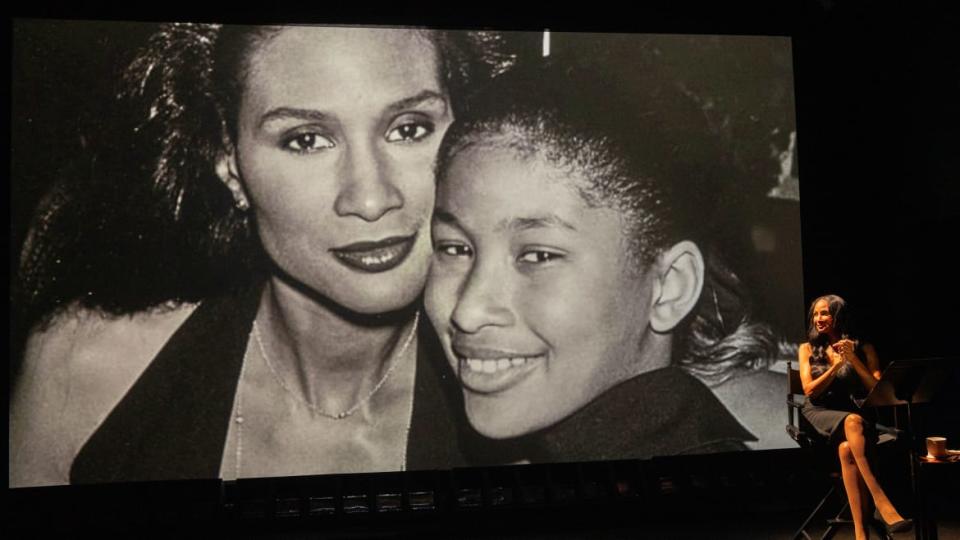
Beverly Johnson’s new show tackles her rise in the fashion industry, and modeling’s hardships and triumphs.
But Johnson also said that’s life as a Black woman.
“You experienced that every day as a Black woman in America,” she told The Daily Beast. “You experience it just going into the store and being followed around because they think you’re gonna steal something.”
Johnson said she had no idea that she was the first Black model on the cover of American Vogue until international reporters brought it up during interviews. She said it was news that reverberated around the world that ignited confidence in Black beauty, no matter the location, and Johnson understood the task at hand.
“As a nation… it’s just a reminder of how far we’ve come and make sure we continue and get that next generation ready,” she said.
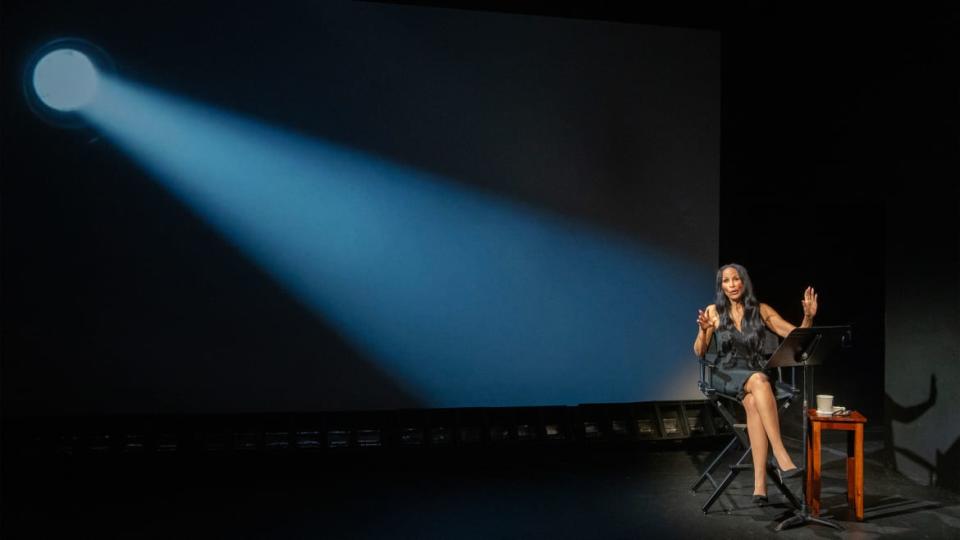
“I had been chosen for a particular moment in history… at first I was like, ‘Dang, that’s a lot of responsibility,’” Beverly Johnson told us.
Get the Daily Beast's biggest scoops and scandals delivered right to your inbox. Sign up now.
Stay informed and gain unlimited access to the Daily Beast's unmatched reporting. Subscribe now.

